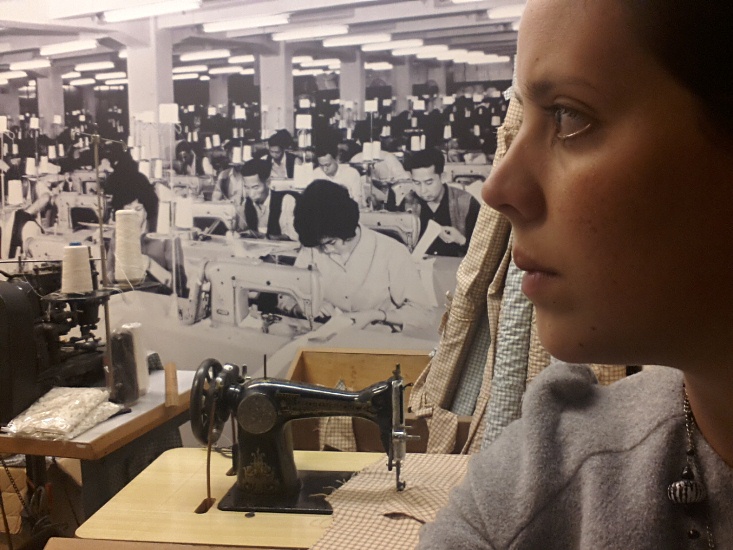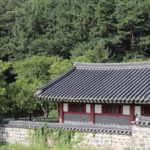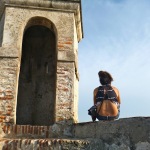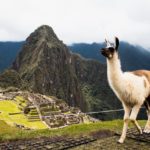A Visit to the Hong Kong Museum of History

Living in a new country compels me to learn more about its history. I believe a country’s history has a lot to do with the way its citizens behave in different circumstances. A visit to the Hong Kong Museum of History gave me a great overview of the history of my new home.
Since the 16th century, the Pearl River Delta has been a trading port to China. Back then, Macau was the gateway for the European countries that traded in China. Later Guangzhou gained importance. But since the 19th century Hong Kong has been the main player in the transactions between Western countries and China.
In 1841, Hong Kong was given to Britain under the Treaty of Nanking, as part of a ceasefire in the First Opium War. Curiously, back then it was considered a sterile island with little development potential. The growth of Hong Kong’s ports and the presence of foreign companies with capital allowed many heavy industries to develop, such as ship-building and maintenance and sugar refining.
A Visit to the Hong Kong Museum of History.
A century later, in 1941, the Japanese bombed Kai Tak and occupied Hong Kong for three years and eight months. This period, marked by Japanese control over Hong Kong citizens, ended when the US attacked Hiroshima and Nagasaki in 1945, which forced the surrender of the Japanese from Hong Kong. The period after the Japanese occupation was marked by the local population’s heavy suffering. More than 80% of the population suffered from malnutrition, malaria, cholera and tuberculosis. Although after the Japanese occupation the population fell due to the implemented deportation program and Chinese migration to the mainland, a huge influx of people started to populate the territory when the peace was recovered. Also, the proclamation of PRC in China in 1949 made many Chinese leave the country and migrate to Hong Kong.
In the second half of the 20th century, Hong Kong experienced rapid industrialization, mainly due to the manufacturing industries’ development and the increase in textile exports. In the 1960s, more than 500,000 people worked in factories. This only declined with the development of manufacturing in South China, which led Hong Kong to shift to a services economy. In the late 1960s, many old buildings were demolished and new, modern buildings were erected in their place. In 1971, the Hong Kong government instituted free and compulsory primary school education for children, ages six to twelve, and in 1978 extended it to nine years of free education. Also during this time, transportation and health care systems were considerably developed in Hong Kong.
In 1984, the British and Chinese governments signed the Sino-British Joint Declaration, in which the British agreed to return the sovereignty of Hong Kong back to China. In 1997, Hong Kong was returned to China, and China agreed to maintain it as an autonomous region for 50 years (until 2047). June 30, 1997 is remembered as the end of Hong Kong’s colonial legacy. In the constitution, the basic law affirms the “One country, two systems” principle, which aimed to assure China’s sovereignty, unity and territorial integrity as well as allow Hong Kong Special Administrative Region to maintain a high degree of autonomy. Today, the English language and the British common law may be the most evident legacies Britain has left in Hong Kong, but others have certainly shaped the way Hong Kong developed.
A Visit to the Hong Kong Museum of History.
This piece of history, along with the rest of Hong Kong’s history is displayed in the Hong Kong Museum of History’s eight galleries.
Besides historic events, a lot of life-size reconstructions allow you to experience what life in Hong Kong was like one or two centuries ago, with traditional shops such as the herbal medicine shop, the post office, the bank, the tea house and a Hakka fishing village. In the Cantonese Opera Heritage Hall, you can see the backstage of a Cantonese Opera show with all of the costumes and accessories, as well as other traditions in Hong Kong culture including the marriage parades and the Cheung Chau Bun Festival.
The entrance is only 10 HKD (around $1.30 USD). The museum opens at 10 AM and closes at 6 PM, but it takes at least two hours to explore. I recommend visiting in the morning. It is closed on Tuesdays and Sundays. You can check out the museum’s website here.
Hong Kong is not a city of museums. You’re more likely to hear about the skyline, the tall buildings or even the star ferry than about one of its museums. But I’ve visited the Hong Kong Museum of History multiple times, and I definitely recommend it.








